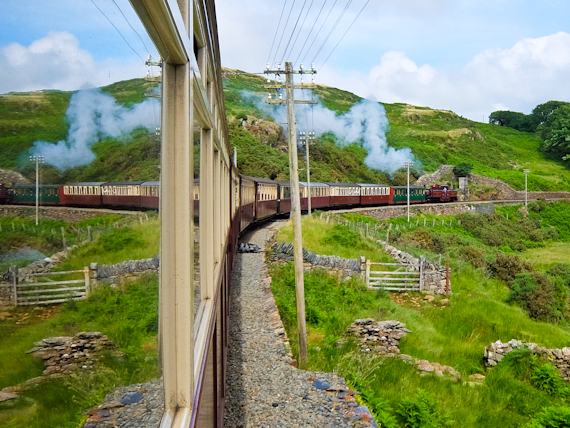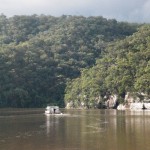This tiny area of Wales is home to probably the highest concentration of narrow and standard gauge steam train lines in the UK. Rupert Parker climbs on board.
Rail travel is one of my favourite modes of transport, so add the nostalgia of steam engines and the glorious scenery of Snowdonia and you have the recipe for a perfect few days. Ironically it’s the modern technology of Virgin Pendulino trains which almost derails me on my way to Llandudno. An unscheduled change at Nuneaton means I’m delayed reaching my start point.
Nestling beneath the small headland, known as the Great Orme, Llandudno looks in better shape since I last saw it, with the Victorian esplanade treated to a lick of shiny new paint. The place seems to be thriving with many of its multiple B&B’s displaying “No Vacancy” signs. I’ve packed my speedos with an optimistic idea of taking a quick dip, but the tide is out and it doesn’t look inviting.
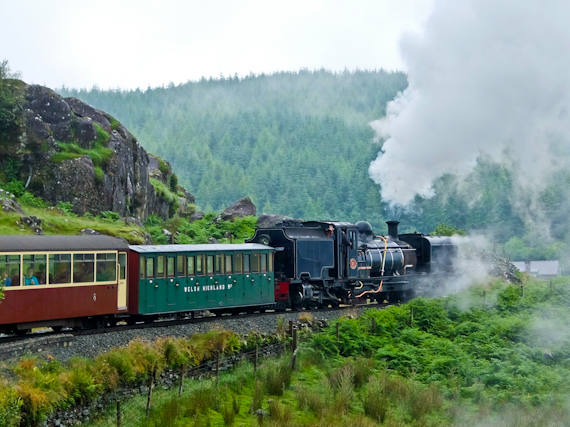
Next day we set off for Caernarfon, with its sprawling castle, to join the Welsh Highland Railway. The narrow gauge line opened to passengers in 1923, running all the way to Porthmadog, but closed in 1937, a dismal commercial failure. The track was pulled up but, in the early 1960s, a group of railway enthusiasts started working to restore the line. In 2003 the first 13 mile section from Caernarfon to Rhyd Ddu was opened, with the rest completed by 2012.
It’s the No. 87 engine pulling my train today, built in Belgium 80 years ago, then serving in South Africa and still going strong. The carriages, though, are all new, and there’s even a kitchen on board, delivering bacon sandwiches and Welsh rarebit. My overwhelming memory of the steam era is of muck and grime, but the Welsh steam coal we’re using today seems to be much cleaner. Trying to take pictures out of the window, however, I do get the occasional bit of grit in my eye.
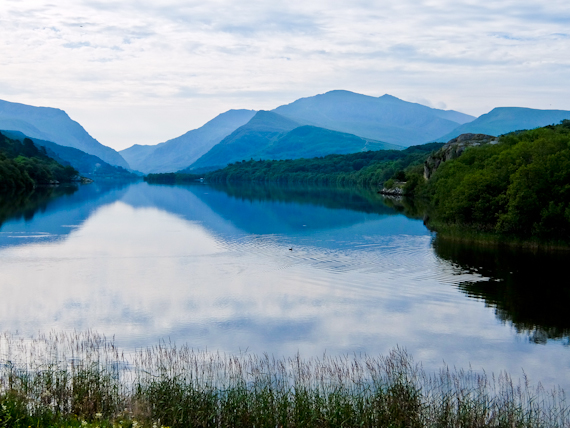
The train climbs out of Caernarfon onto the Arfon Plateau, with the Snowdonia Mountains on the left and Caernarfon Bay and the Lleyn Peninsula on the right. Top speed is 25mph but who’s complaining when we’re treated to stunning mountain views. We reach Dinas, the centre of engineering operations which also hosts an annual beer festival, then travel past exhausted slate quarries, before entering the Snowdonia National Park at Bryn Gloch.
Here the valley narrows dramatically as we pass between mountains Moel Eilio and Mynydd Mawr, before widening again at Lake Llyn Cwellyn. Just beyond is the Ranger path to the top of Snowdon, but the peak is shrouded in mist and the track leads into the clouds. The highest point of the line is at Pitts head and then the train zig zags down the hillside to Beddgelert. From here it goes through the picturesque Aberglaslyn Pass and on to Porthmadog.
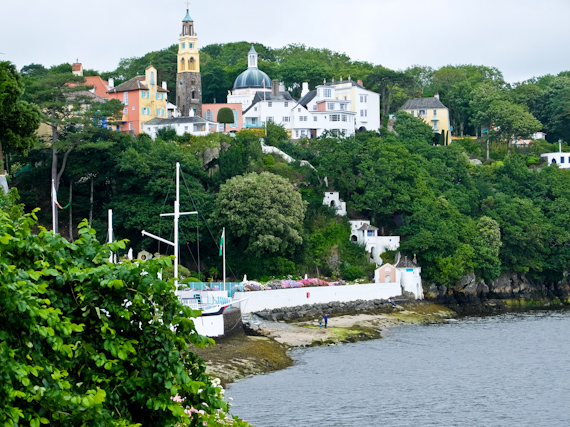
Lunch is just outside the town in the wacky village of Portmeirion. It was designed and built by architect Sir Clough Williams-Ellis between 1925 and 1975. He had the idea to create an Italian Village on the North Wales coast and develop it as a tourist attraction, with a hotel and self-catering cottages. Of course everyone knows it from the 1960’s TV series “The Prisoner” but when all the tourists have left for the day, it’s an oasis of tranquillity. I sit among the crowds and enjoy a freshly made crab sandwich at the Town Hall Cafe.
After lunch, it’s back to Porthmadog station to take the Ffestiniog Mountain Railway, the oldest surviving railway company in the world. Built between 1833 and 1836, it transported slate from the quarries in Blaenau Ffestiniog to Porthmadog harbour, where it was loaded onto ships for export. Gradually the slate ran out, passengers diminished and it finally closed in 1946. Rail enthusiasts got it re-opened as a tourist attraction in 1954.
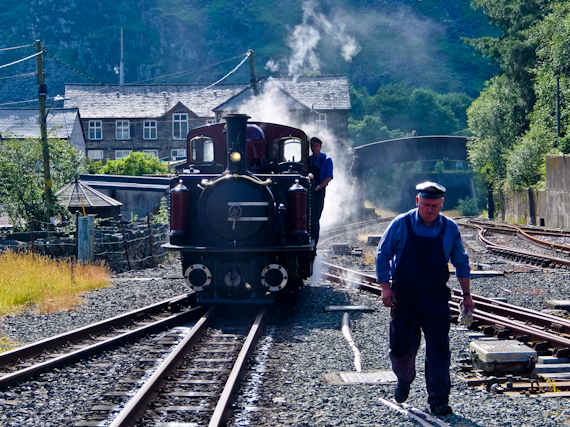
Even though this is the same gauge as the Welsh Highland Railway, the carriages are smaller due to the lower load bearing capacity of the line. My engine is the Merddin Emrys, named after a Welsh wizard, and the first engine to be built for the railway in 1879. As we puff upwards through Minfford and Penrhyn, though narrow cuttings and past toy town stations, there are glorious views of the mountains
I’m lucky enough to get a ride on the footplate, careful not to burn myself on the hot machinery in the cramped cab. Paul, the engine driver, tells me that it’s dirty work, although his mate shovelling coal into the boiler has the worst job. Sheep are grazing in the fields on either side of the track and I enquire whether they ever get onto the line. Occasionally, he says, and we have to compensate the farmers. Fortunately there’s no lamb on the line and we arrive at Blaenau Ffestiniog without incident.
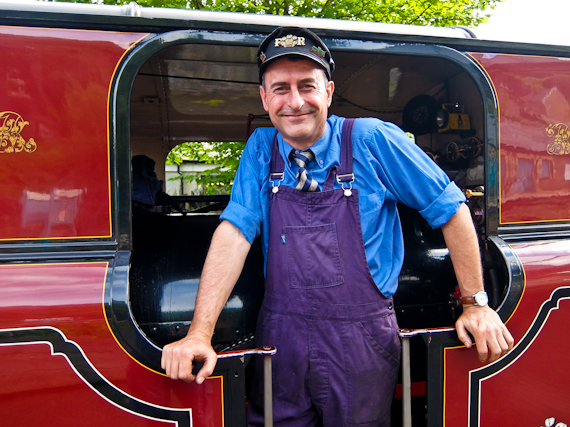
Next day we’re in Llangollen to catch another train, this time running on standard gauge. The original British Rail line was closed in 1968 and both the track and signalling removed. The enthusiasts fought back and managed to run the first train of the Llangollen Railway in 1975. Then, they only had 60 feet of re-laid track to play with but now there’s seven and a half miles running as far Corwen.
As I step onto the train, it really does bring back memories of travelling on British Rail in the age of steam. The engine was built in 1953 in Brighton and the carriages look like they’ve just been recently retired from the mainline. Unlike the narrow gauge trains, there’s plenty of room on board and it’s a pleasant ride, alongside the River Dee to Corwen. Here the engine uncouples and changes ends before taking us back to Llangollen.
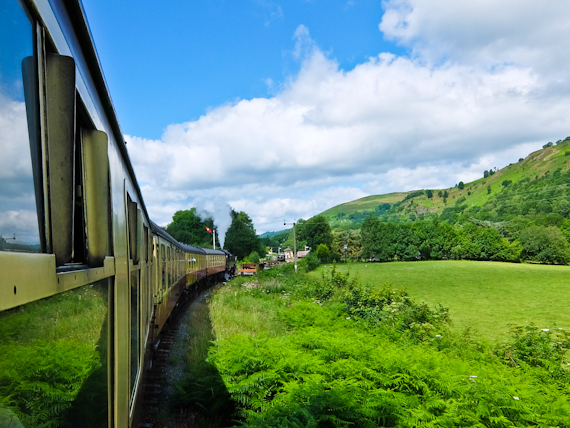
The advent of the railways made canals redundant but you can step back in time and take a horse drawn narrow boat on the Llangollen canal. After a pleasant lunch at the Tea House on the wharf, a short 45 minute return trip is a pleasant way to savour the peace and quiet. The only problem is that the hypnotic clip clop of the horse’s hooves, as we glide serenely along the canal, makes it difficult to stay awake
Our final journey is on the Snowdon Mountain Railway which opened in April 1896 and has been running ever since. It starts in Llanberis and climbs almost five miles on a narrow gauge rack and pinion railway to the summit of the highest mountain in England and Wales. Of the original eight engines, four are still working, and each consumes 350kg of coal and 2000 litres on water on their journey to the top.
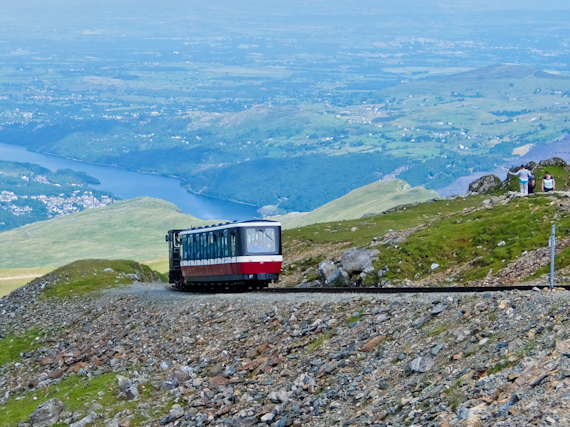
There’s only one carriage and the engine pushes us out of Llanberis and begins to climb the steep gradient. Fortunately, the sun is shining and, as we move above the treeline, the views are tremendous. At the halfway point, we stop to take on water, before climbing along an exposed ridge to Clogwyn Station. If the weather is bad, trains terminate here, but we’re given the all clear and finally reach the terminus, at 1085m.
Since I was last here they’ve opened a new visitor centre, an award winning structure of granite and glass which blends into the landscape. There’s no time to linger, however, as I’m anxious to reach the top whilst it’s still clear. As I scramble to the summit, the cloud begins to swirl around, but I’m blessed with clear views of the Isle of Man and the Wicklow Mountains in Ireland. There’s something to be said for letting the train take the strain.
All images (c) Rupert Parker
Tell me more about Welsh Railways
Great Rail Journeys includes trips on the Welsh Highland, Ffestiniog and Snowdon Mountain Railways on its 6-day ‘Railways & Castles of Wales’ escorted tour. Tel: 01904 527 180.
Rail Discoveries includes trips on the Welsh Highland, Ffestiniog and Llangollen Railways plus a horse drawn canal boat experience, on its 6-day ‘Railways of Wales’ escorted tour. Tel: 01904 734 812.
Visit Llandudno has tourist information about the town.
Wildwood Restaurant in Llandudno is good for pizza, pasta and grills.

